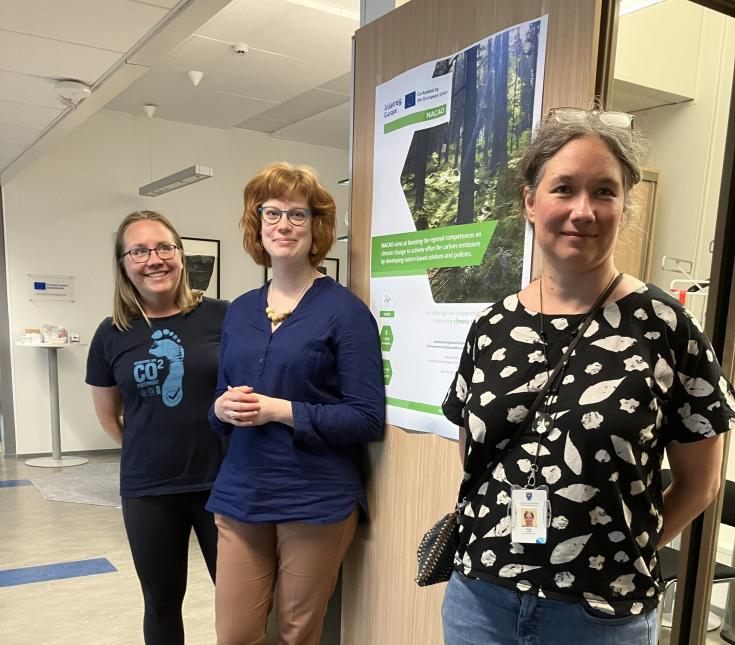Stakeholders Group Meeting nº 3/8 in Jyväskylä, Finland
In this meeting the main discussions related to results of Situational Analysis Central Finland, key points from bilateral interviews of each stakeholder group members, reflections related to Good Practices presented in last two consortium meetings. Also plans for next 12 months in NACAO in Central Finland area were under discussion and project manager got good advice for planning next steps.
Situational analysis contained three interesting geographical maps, which visualised condition of forests, mires and agricultural areas in Central Finland. The stakeholders discussed that the age structure of forests in Central Finland is fragmented. This is due to clear-cutting and private forest ownership. Continuous cover forestry challenges the ageing of forests and the current forestry model challenges the transition to continuous cover forestry. In practice, many measures that sound easy can be difficult to implement. For example, a 20-year increase in the age of spruce stands is significant if the current age is 60 years.
Solar power challenges land use. If solar power is limited to forest areas, there will be little suitable land left other than fields; and fields have their own value. Wetland farming is generally seen as a good option, but it is not currently used in Central Finland. National subsidy has also been withdrawn. The work with wetland farming starts from zero, so it is difficult to reach impressive volumes.
Good Practices presented in Jyväskylä and Aix-les-Bains meetings were discussed as follows: Green schoolyards are a growing trend in Finland too. The persistence of plantings is an issue (vandalism) and maintenance is laborious (leaves are a problem as litter). Large trees can act as local cooling and shading agents and make the environment more pleasant. In Finland, large trees are not maintained in the same way as in many other countries, but are more easily removed for safety reasons. Green roofs are an example of an activity that is not necessarily a carbon sink. Instead, they are important for biodiversity and stormwater management.
The background to the Spanish sediment project discussed; how carbon is sequestered on tidal shores: tidal areas are restored to allow seawater to rise and this adds sediment. In this way, not only is the carbon stored in the sediment increased, but biodiversity is also enhanced as local plant species return to the area. In Finland, the biomass from the shores and its role in the carbon cycle in relation to lake sediment may not have been assessed; is sedimentation long term or short term? Sediment formation is influenced by water layers and turbidity.
Project manager Anna-Kaisa Tupala presented that based on Situational study the coming local communication action will be targeted to agricultural entrepeneurs in those parts of region, where many fields have peatland base. On those areas, there are relatively highest opportunities to reduce CO2-emissions. The experts in stakeholder group commented plans.
Farmers are often also forest owners and multi-sectoral entrepreneurs, whose land is also used for water conservation. Water protection also contributes to carbon sequestration objectives. It is good to organise concrete events. The target group should be considered more broadly if the aim is to think about networks and value chains. Meeting and peer support can be important for farmers. Need to look for examples and good ongoing practices to include in addition to expert presentations. Examples do not have to be local, but can come from other regions in Finland.
Pilot action funding is applied for together with the city of Jämsä. Preparations for the application will start in autumn 2024.
